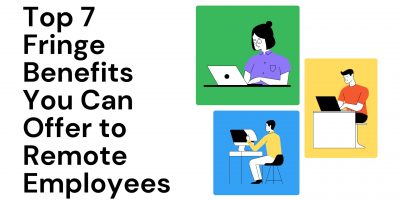
How to Jumpstart an L&D Career?
Discover the path to becoming a proficient learning and development professional with expert tips and actionable insights.

Building and maintaining a positive employer brand is paramount nowadays. As people’s needs evolve, a “good job” is no longer only a high-paying one. The latest employer branding statistics show that employees need purpose, flexibility, and inclusiveness to fully commit to their roles.
The employer brand is the hallmark of the company’s personality.
Ideally, it reflects the culture and its values. But the distinction between a good and lousy personality rests in the employer’s readiness to adapt to the workforce’s needs.
All in all, the benefits of good employer branding are many. From boosting marketing efforts and lowering hiring costs to recruiting and retaining top talent, here are some of the latest employer branding stats.
The most significant assets of a business are its employees.
Thus, giving them a voice and acting on their demands is an exceptional employer branding strategy. That, and checking up on recent employer branding stats to stay up to date.

Recruiting is marketing.
To attain top talent, employers need to market their business. So, what better way to do it than to build a reputable brand? Setting up personalized marketing objectives and using the right recruitment tools can shorten the hiring process time and reduce costs
Motivation and employee productivity increase with strong company culture. Amid the great resignation and increased employee dissatisfaction, companies could reduce turnover by providing employees with perks and benefits. These employer branding statistics tell us how companies can increase retention by taking care of their brand.

Motivation and employee productivity increase with strong company culture. Amid the great resignation and increased employee dissatisfaction, companies could reduce turnover by providing employees with perks and benefits. These employer branding statistics tell us how companies can increase retention by taking care of their brand.
These employer branding statistics show the immense role brand plays in every business. But they are just the tip of the iceberg. Employees’ needs are fluent. The good news is that once a company builds trust, its employees become the best brand ambassadors and the driving force for a positive employer brand.
Browse our curated list of vendors to find the best solution for your needs.
Subscribe to our newsletter for the latest trends, expert tips, and workplace insights!

Discover the path to becoming a proficient learning and development professional with expert tips and actionable insights.

When the modern workplace is increasingly transactional, is employee loyalty just outdated? Explore the meaning of employee loyalty in the workplace and what’s truly needed to keep valuable employees.

Apart from the benefits’ role in maintaining the remote workforce’s motivation, morale, and productivity, is offering fringe benefits to remote employees a way to retain and attract top talent worldwide?

In a world driven by digital tools and transformations, where does your HR skill set stand?
Used by most of the top employee benefits consultants in the US, Shortlister is where you can find, research and select HR and benefits vendors for your clients.
Shortlister helps you reach your ideal prospects. Claim your free account to control your message and receive employer, consultant and health plan leads.